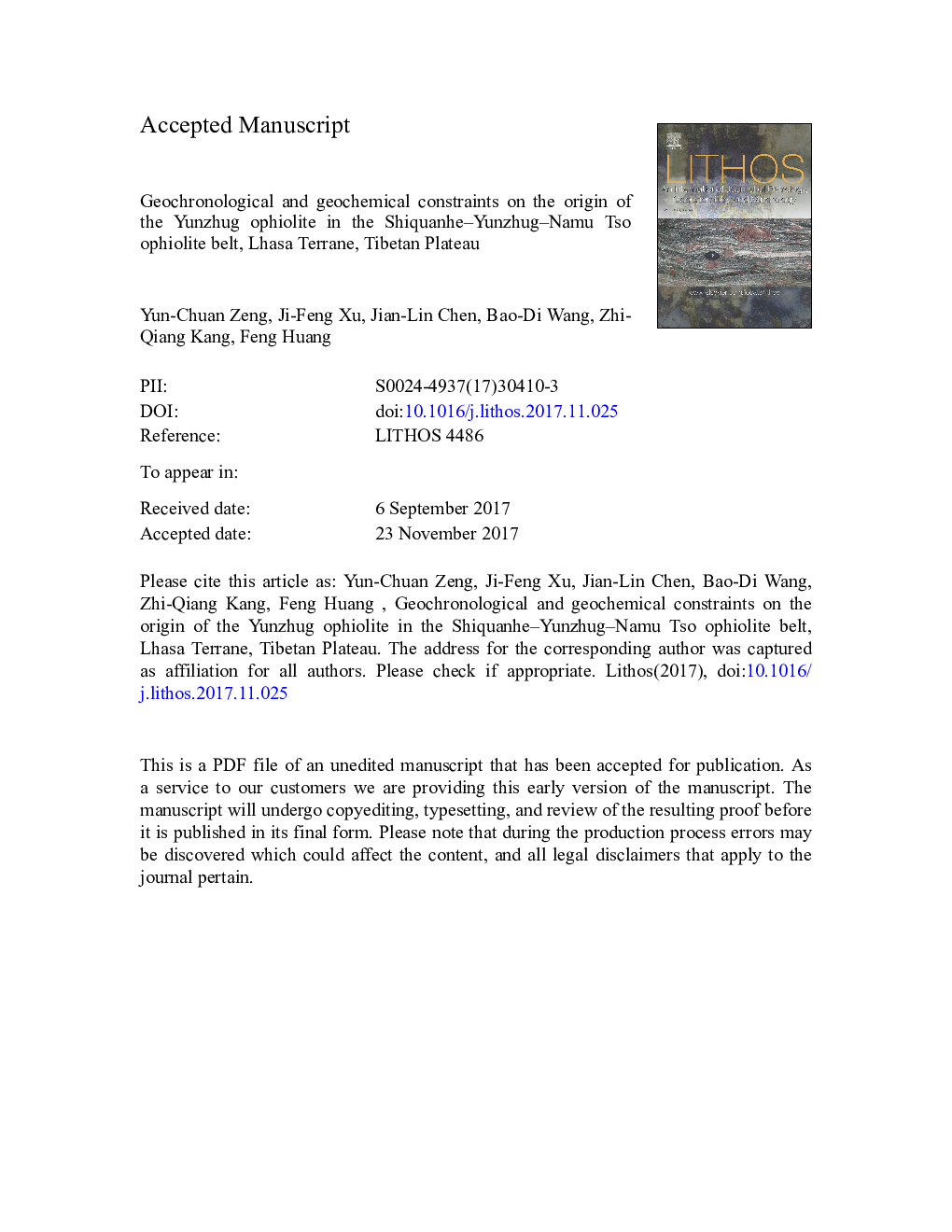| Article ID | Journal | Published Year | Pages | File Type |
|---|---|---|---|---|
| 8911763 | Lithos | 2018 | 49 Pages |
Abstract
The formation of the Shiquanhe-Yunzhug-Namu Tso ophiolite mélange zone (SNMZ) within the Lhasa Terrane, Tibetan Plateau, is key to understanding the Mesozoic tectonic evolution of this terrane, which remains controversial. We show that the Yunzhug ophiolite in the central segment of the SNMZ formed at ~ 150 Ma, based on U-Pb dating of zircons from a gabbroic sample in a well-developed sheeted dike complex. Geochemically, these mafic rocks are dominated by E-MORB-type compositions, along with minor amounts of rocks with P-MORB-type compositions. The samples also exhibit high εNd(t) values and lack negative Nb and Ta anomalies. Data for all the samples plot within the MORB array on a Th/Yb-Nb/Yb diagram. Therefore, these mafic rocks most likely formed in either a slow spreading oceanic setting or an embryonic ocean, and not in a back-arc basin as has been previously assumed. Taking into account the regional geology, we propose that the Yunzhug ophiolite is part of a distinct ophiolitic belt and represents material formed in an embryonic ocean within the Lhasa Terrane, which provides new insights into the Jurassic tectonic evolution of the Lhasa Terrane.
Related Topics
Physical Sciences and Engineering
Earth and Planetary Sciences
Geochemistry and Petrology
Authors
Yun-Chuan Zeng, Ji-Feng Xu, Jian-Lin Chen, Bao-Di Wang, Zhi-Qiang Kang, Feng Huang,
